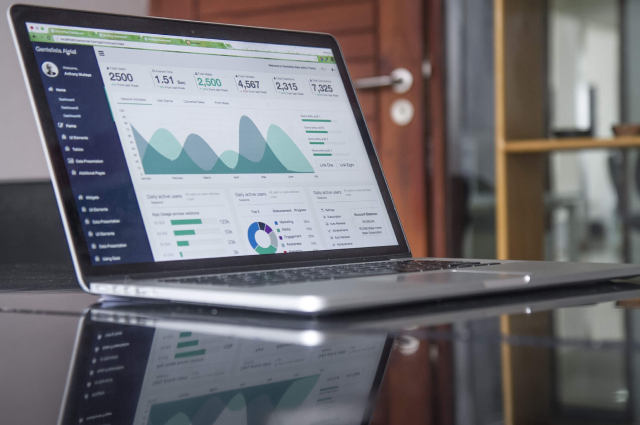Companies that use digital advertising increase their brand reputation by an average of 31%. That can have a very direct impact on how likely new customers are to buy from you.
But many businesses that use digital marketing still rely heavily on web tracking with cookies. This approach may not be viable for much longer due to shifting attitudes towards consumer privacy
That’s why it’s worth taking the time to learn about visitor tracking without cookies. Learning how to do so could be just what you need to continue hitting your lead goals in the face of a changing regulatory landscape.
In this article, we’ll cover everything that you need to know about cookie-less tracking in 2022. So let’s get into it.
What are cookies? How do they impact digital marketing?
A cookie is created and tied to your IP address when you visit a website. Websites can then use your cookie to do things like:
- Choose which ads are shown to you
- Remember your preferences
- Auto-populate your login information
- Keep previously-added items in your shopping cart
Cookies are beneficial for digital marketers because they provide a ton of data about what you look at on the internet. A marketer can use that information to serve you advertisements and content that move you closer to their lead goals.
Why would you want to perform web tracking without cookies?
Though web tracking with cookies is still very popular, it’s unlikely to maintain this usage level in the future. That’s true for a few reasons.
Privacy regulations
Recently, consumers are more aware of how companies collect their online data and use it. That’s why we’ve seen legislation like the European Union’s GDPR and California’s Consumer Privacy Act get passed.
These laws address the growing consumer demand for data privacy accountability. But they limit how companies can use cookies to perform visitor tracking and digital marketing.
If you do business in a region governed by this legislation, you could be restricted from using cookies for marketing purposes.
Reduced website performance
Your website’s code directly influences how quickly your pages load. If you’re using a lot of cookie-based data to track user behavior, it could end up significantly slowing loading times, causing people to leave your website and potentially increasing your bounce rate.
Data overload
If you run a popular website, you might get hundreds of thousands of daily visits. That can make it extremely tough to sift through all of the cookie data you collect. Working through a mountain of data like this could end up costing more than it’s worth for you.

Best practices for visitor tracking without cookies
Let’s take a look at the best practices for cookie-less web tracking. Here are four steps worth thinking about as you make the switch to becoming a cookie-less platform.
Understand the information you currently collect from cookies
The first step to successfully web tracking without cookies is understanding what data you’re currently collecting and how you use it in your marketing campaigns. This should reveal which digital marketing strategies will need to change and which you can continue using.
So an initial step to going cookie-less is conducting an organization-wide review of how you’re currently using cookies.
Use audience segmentation
Just because you’re no longer using cookies doesn’t mean you need to give up on marketing personalization. A well-planned audience segmentation strategy provides insight into the customer base you need to hit your lead goals.
You can target each segment of your audience with personalized content based on behavior, demographic information, or other distinguishing factors.
Although many companies do this already with cookies, you can do it without them by gathering user information from:
- Voluntary surveys
- Downloads
- Email list sign-ups
- Conversations with individual leads
Focus more on first-party data
It’s also worth distinguishing between first-party and third-party user data. First-party data comes directly from your website, while third-party data involves tracking user behavior on other websites.
Most privacy legislation gives marketers clear guidelines that allow them to continue using first-party data in an ethical, consumer-friendly way.
So if you just want to make sure you’re following the law, you may still be able to use cookies for your marketing. You just need to be sure that you stay compliant with the relevant privacy regulations where you’re doing business
Always give users the option to opt-in to your data-based marketing
No matter how you plan on using someone’s data to market to them, it’s essential always to be clear about it. That’s why it’s wise to start giving users the chance to opt in to any of your personalized marketing efforts.
Many websites do this when you first arrive on the site. They’ll ask users to check a box or click a button that allows them to either accept or deny the site’s cookie tracking. You can do the same on your website to split users into segments based on whether or not you’ll use cookies to track their behavior.
Doing this will help you build a solid reputation with your customers. And it may even help you hit your lead goals by giving people enough confidence to opt in to your data-based marketing.
Tools for web tracking without cookies
Historically, website visitor tracking software has used cookies to provide information about your visitors. But there are also tools out there that can help you perform data-based, personalized marketing without having to rely on cookies to do so.
Here are three of those that could help your organization get the most out of cookie-less tracking.
Segment Stream
Segment Stream is a predictive analytics tool designed to help companies get as much out of their data as possible. It recovers conversions lost due to ITP, private browsing, and cross-device browsing.
The tool works by looking at all of your data and then using AI and predictive analytics to provide hidden insights. Using SegmentStream to get more out of your data could be enough to replace the insights you lose by giving up on cookie-based marketing.
Fathom
Fathom is a tool that can be a great alternative to Google Analytics. It features an intuitive dashboard that provides in-depth insights into your website data.
The tool is also designed to be enterprise-grade. It can handle billions of page views without sacrificing anything in quality. So if you run a big company that earns a lot of website views, then Fathom could be just what you need to become a cookie-less organization.
Plausible
Plausible is an excellent tool for website owners looking for a lightweight, surgical way to analyze their data. The platform is also entirely open-source and compliant with all major privacy regulations.
Whether or not you have a ton of experience analyzing web data, Plausible can help your company adjust to cookie-less marketing with its simple interface and seamless integration options.
Achieving your digital marketing lead goals without relying on cookies
We’re entering a unique point in the maturation of digital marketing. The cookie-based tactics of the past are going out of style. Which can be scary if you’ve relied on cookies heavily in the past.
But it’s also an opportunity for your company to establish itself as a leader in the new era of digital marketing. You can still achieve your lead goals without relying on cookies. You just need to adjust your tools and strategies.
If you can do this effectively before your competition, then you could be well-positioned to excel in 2022 and beyond.

LeadLander makes it easier to track your website visitors ethically
Whether your organization is eliminating cookies altogether or not, you need a way to get value out of your website data. That’s why you should consider investing LeadLander.
We offer industry-leading website tracking software that gives you complete control over how you collect data. This makes it easy to build a data collection strategy that aligns with your view on cookies.
LeadLander also has an intuitive dashboard that everyone in your organization can use with ease. That makes us the perfect partner to help you take your first steps in the cookie-less world.
So why wait? Sign up for a demo today to get a closer look at how you can benefit from using LeadLander for digital marketing.


